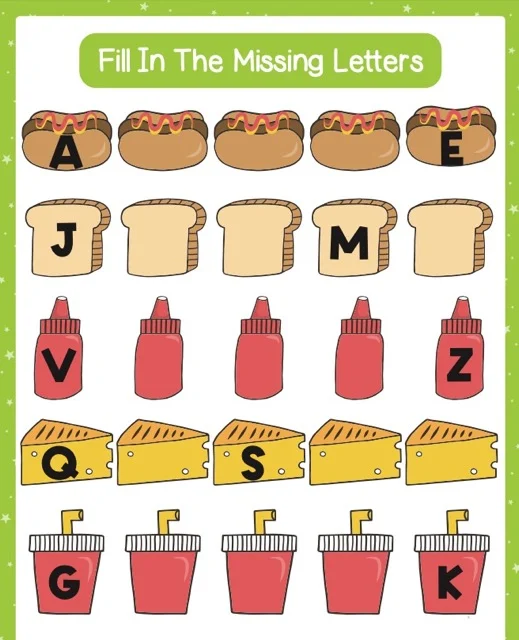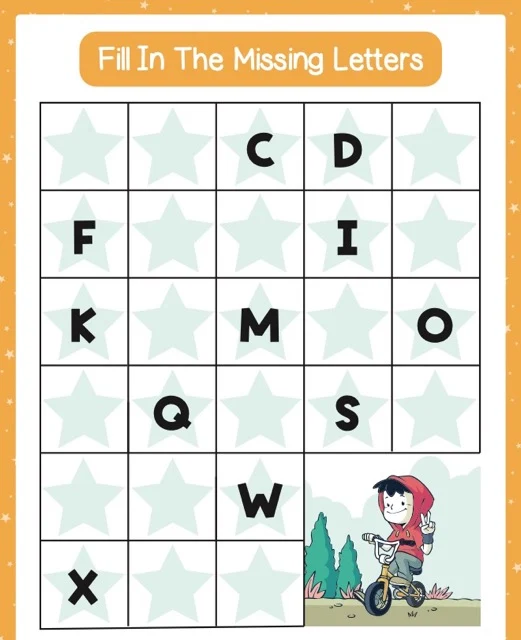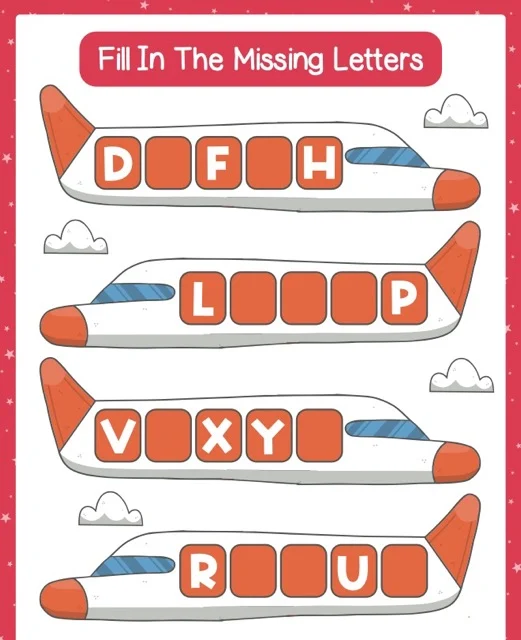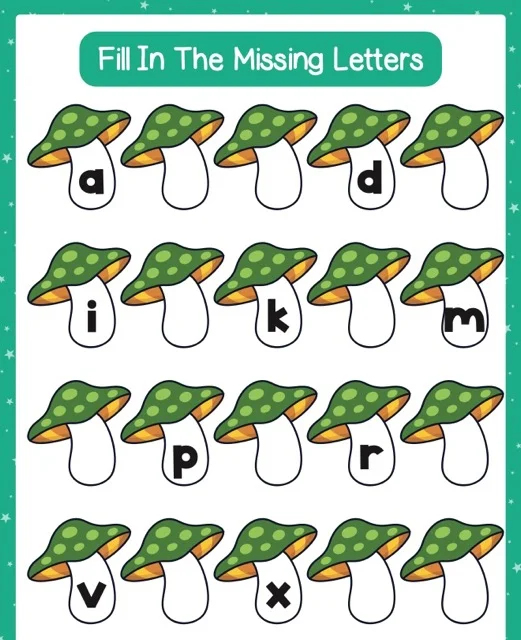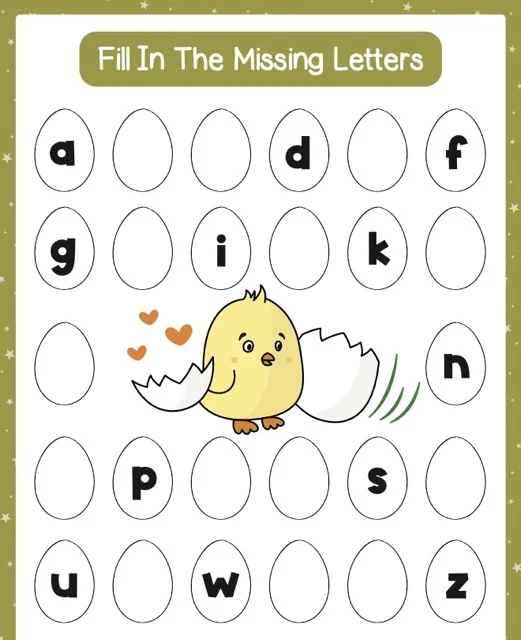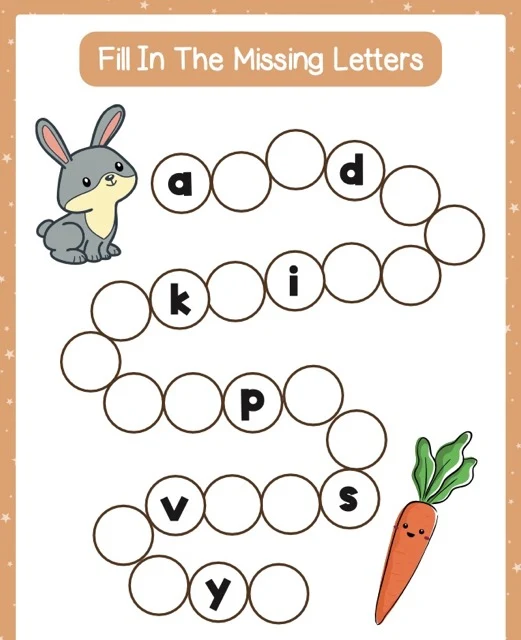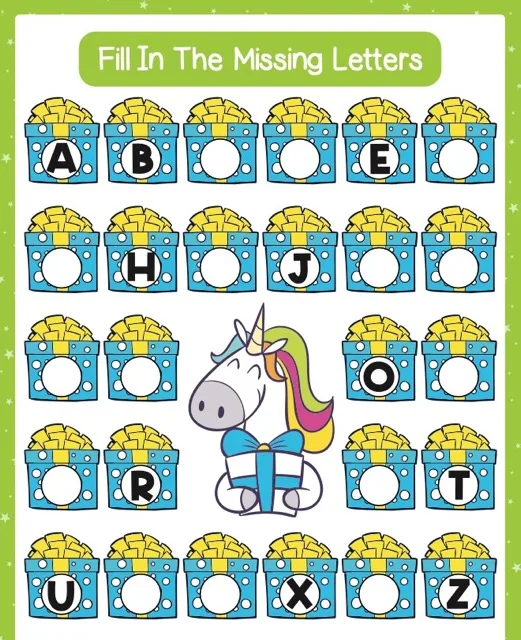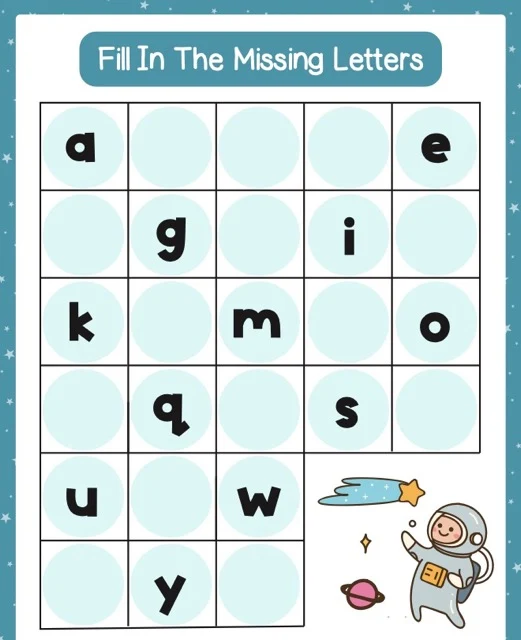Fill In The Missing Letters: A Puzzle Analysis
This briefing document examines "Fill In The Missing Letters" puzzles, detailing their core concept of identifying patterns in sequences to find missing letters. The document highlights the cognitive benefits, including pattern recognition and logical reasoning, and educational applications for reinforcing alphabet knowledge and problem-solving skills. It also discusses adaptability for different skill levels and variations like using picture clues or number sequences. Finally, it provides an example puzzle and suggests resources for finding more puzzles.
Fill In The Missing Letters Puzzles
Briefing Doc: Fill In The Missing Letters Puzzles
This briefing doc reviews the main themes and key information on "Fill In The Missing Letters" puzzles, drawing from three provided sources: a comprehensive guide, a study guide, and a puzzle example.
Core Concept:
"Fill In The Missing Letters" is a puzzle genre where players decipher a pattern within a sequence (letters, numbers, or pictures) to determine missing elements. The primary objective is to identify the missing letters within a word or sequence. Players must understand the pattern or rule governing the sequence to determine the correct letters. As stated in "Fill In The Missing Letters: A Comprehensive Guide," "The goal is to identify the pattern or rule governing the sequence and use it to deduce the missing letters."
Cognitive Benefits:
These puzzles offer numerous cognitive benefits:
●
Pattern Recognition: Identifying recurring trends in the sequence is key to solving the puzzle.
●
Logical Reasoning: Players use deductive reasoning to arrive at the solution based on the identified pattern.
●
Alphabet Knowledge: Familiarity with letter order and the alphabet is essential, particularly for letter-based puzzles.
●
Problem-Solving: Players must strategically apply logic and knowledge to find the solution.
●
Sequencing: Understanding the order and arrangement of elements in the sequence is crucial.
Educational Applications:
"Fill In The Missing Letters" is a valuable educational tool:
●
Reinforces alphabet knowledge and letter order.
●
Teaches and practices pattern recognition.
●
Enhances logical thinking and problem-solving skills.
Adaptability and Variations:
The difficulty and format can be adapted to suit various age groups and skill levels:
●
Length of the sequence: Shorter sequences are generally easier.
●
Complexity of the pattern: Simple alphabetical order is easier than complex patterns.
●
Type of content: The theme can be adjusted to engage specific age groups.
Variations include:
●
Fill in missing vowels/consonants: Focus on completing words by filling in either missing vowels or consonants.
●
Picture clues: Replace some sequence elements with pictures.
●
Number sequences: Apply the same principle to numerical sequences.
Example Puzzle:
The provided example, "G R VX_ J," challenges players to discern the pattern and fill in the missing letter. This specific sequence does not appear to follow a standard alphabetical or numerical pattern, suggesting a more complex rule may be at play.
Resources:
Puzzles can be found online through dedicated websites and apps, or offline via printable worksheets and educational materials.
Conclusion:
"Fill In The Missing Letters" puzzles offer a fun and engaging way to develop critical thinking skills, particularly pattern recognition and logical reasoning. Their adaptability makes them suitable for a wide range of learners and educational settings.
Fill In The Missing Letters: A Comprehensive Guide
Fill In The Missing Letters FAQ
1. What is "Fill In The Missing Letters"?
"Fill In The Missing Letters" is a type of puzzle or game where some letters in a word or sequence are missing, and the player has to figure out the missing letters to complete the word or sequence.
2. How do you play "Fill In The Missing Letters"?
The goal is to identify the pattern or rule governing the sequence and use it to deduce the missing letters. This might involve recognizing alphabetical order, skip counting, or other relationships between the given letters.
3. What skills does "Fill In The Missing Letters" help develop?
This game helps develop several cognitive skills, including:
●
Pattern recognition: Players need to identify the underlying pattern in the given letters.
●
Logical reasoning: Players must use logic to deduce the missing letters based on the pattern.
●
Alphabet knowledge: Players need a good understanding of the alphabet and letter order.
4. What is the purpose of providing the example "G R VX_ J"?
The example "G R VX_ J" is likely intended to illustrate how a "Fill In The Missing Letters" puzzle works. It presents a sequence with a missing letter, challenging the player to figure out the pattern and complete the sequence.
5. Can "Fill In The Missing Letters" be adapted for different age groups?
Yes, the difficulty of "Fill In The Missing Letters" can be adjusted by:
●
Length of the sequence: Shorter sequences are easier for younger players.
●
Complexity of the pattern: Simple alphabetical order is easier than skip counting or other complex patterns.
●
Type of content: Using words related to a specific theme (animals, colors) can make the game more engaging for specific age groups.
6. Are there any online resources for playing "Fill In The Missing Letters"?
Yes, there are websites and apps that offer "Fill In The Missing Letters" games and puzzles. You can also find printable worksheets online for offline play.
7. Can "Fill In The Missing Letters" be used in educational settings?
Absolutely! It's a valuable tool for educators to:
●
Reinforce alphabet knowledge and letter order
●
Teach and practice pattern recognition
●
Enhance logical thinking and problem-solving skills
8. What are some variations of "Fill In The Missing Letters"?
The concept can be adapted in various ways:
●
Fill in missing vowels/consonants: Instead of individual letters, players fill in missing vowels or consonants in a word.
●
Picture clues: Use pictures instead of letters as part of the sequence, requiring players to identify the missing image.
●
Number sequences: The same principle can be applied to number sequences with missing numbers.
Mastering Fill-In-The-Missing-Letters Puzzles
Fill In The Missing Letters Study Guide
Short Answer Quiz
Instructions: Answer each question in 2-3 sentences.
1.
What is the primary objective in a "Fill In The Missing Letters" puzzle?
2.
Describe how the example sequence "G R VX_ J" functions within the context of a guide about "Fill In The Missing Letters."
3.
Explain the role of pattern recognition in solving "Fill In The Missing Letters" puzzles.
4.
How does logical reasoning contribute to successfully completing "Fill In The Missing Letters" puzzles?
5.
Beyond alphabet knowledge, name two additional cognitive skills developed through "Fill In The Missing Letters."
6.
List three methods for adjusting the difficulty of "Fill In The Missing Letters" to cater to various age groups or skill levels.
7.
Provide two specific examples of how "Fill In The Missing Letters" can be used for educational purposes.
8.
Suggest two online or offline resources where one can find "Fill In The Missing Letters" puzzles.
9.
Describe one variation of the traditional "Fill In The Missing Letters" format.
10.
Explain how "Fill In The Missing Letters" can be adapted for use with number sequences.
Answer Key
1.
The primary objective in a "Fill In The Missing Letters" puzzle is to identify the missing letters within a word or sequence. Players must decipher the pattern or rule governing the sequence to determine the correct letters.
2.
The example "G R VX_ J" serves as a demonstration of a "Fill In The Missing Letters" puzzle. It presents a sequence with a missing letter, challenging the reader to discern the pattern and determine the solution.
3.
Pattern recognition is crucial in "Fill In The Missing Letters" puzzles as players must identify the underlying pattern within the given sequence. Recognizing the pattern allows players to predict and fill in the missing letters.
4.
Logical reasoning plays a vital role in "Fill In The Missing Letters" because players must use deductive reasoning to arrive at the solution. Based on the identified pattern, they must apply logic to determine the missing letters.
5.
Two additional cognitive skills developed through "Fill In The Missing Letters" are problem-solving and sequencing. Players must solve the problem of missing letters and understand the order and arrangement of the sequence.
6.
The difficulty can be adjusted by: 1) altering the length of the sequence, with shorter sequences being easier; 2) modifying the complexity of the pattern, with simpler patterns like alphabetical order being easier; and 3) changing the type of content to align with a specific theme or age group.
7.
"Fill In The Missing Letters" can be used educationally to: 1) reinforce alphabet knowledge and letter order by having students identify and place letters within sequences; and 2) enhance logical thinking and problem-solving skills through the process of deciphering patterns and deducing missing letters.
8.
Online resources include websites and apps specifically designed for "Fill In The Missing Letters" games, while offline resources include printable worksheets found online or in educational materials.
9.
One variation is "Fill in missing vowels/consonants" where players focus on completing words by filling in either the missing vowels or consonants instead of individual letters throughout a sequence.
10.
The concept of "Fill In The Missing Letters" can be applied to number sequences by presenting a series of numbers with one or more missing. Players must identify the pattern or rule within the numerical sequence to determine the missing numbers.
Essay Questions
1.
Discuss the cognitive benefits of engaging with "Fill In The Missing Letters" puzzles. How does this activity contribute to the development of critical thinking skills?
2.
Analyze the effectiveness of "Fill In The Missing Letters" as an educational tool. Explore its applications in various learning environments and its impact on different age groups.
3.
Compare and contrast the traditional "Fill In The Missing Letters" format with its variations. Discuss the advantages and challenges presented by each format.
4.
Explain how the principles of pattern recognition and logical reasoning are intertwined in solving "Fill In The Missing Letters" puzzles. Provide specific examples to illustrate your points.
5.
Design a hypothetical "Fill In The Missing Letters" puzzle aimed at a specific age group. Explain your choice of pattern, content, and difficulty level, and justify your reasoning based on the target audience's developmental stage.
Glossary of Key Terms
Alphabet Knowledge: Familiarity with the letters of the alphabet, their order, and their sounds.
Cognitive Skills: Mental processes involved in learning, thinking, remembering, and problem-solving.
Deductive Reasoning: A logical process where conclusions are drawn from a set of premises or general principles.
Logical Reasoning: The ability to think logically and systematically, using evidence and reason to reach conclusions.
Pattern Recognition: The ability to identify recurring patterns or trends in information.
Sequence: An ordered arrangement of items or events.









